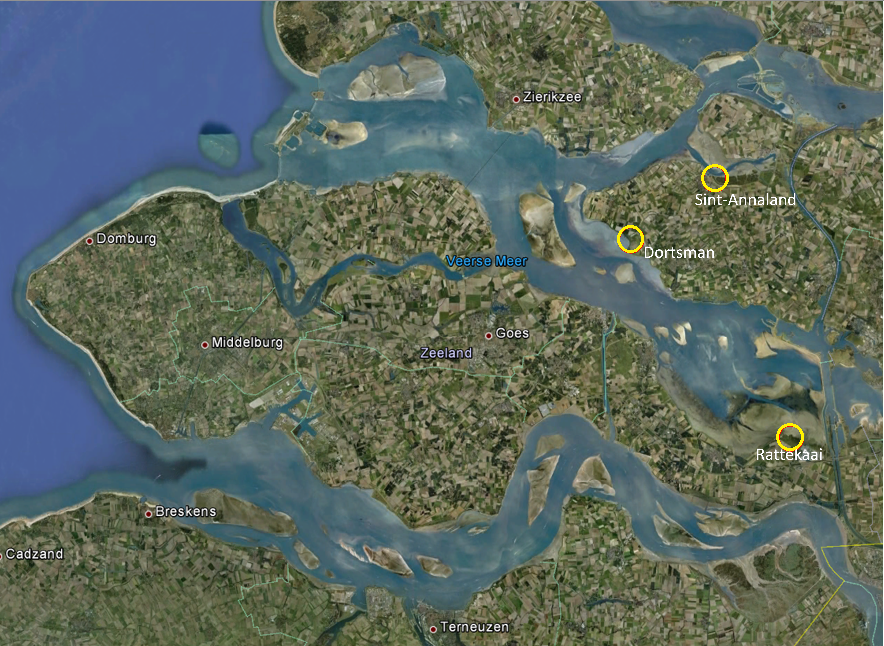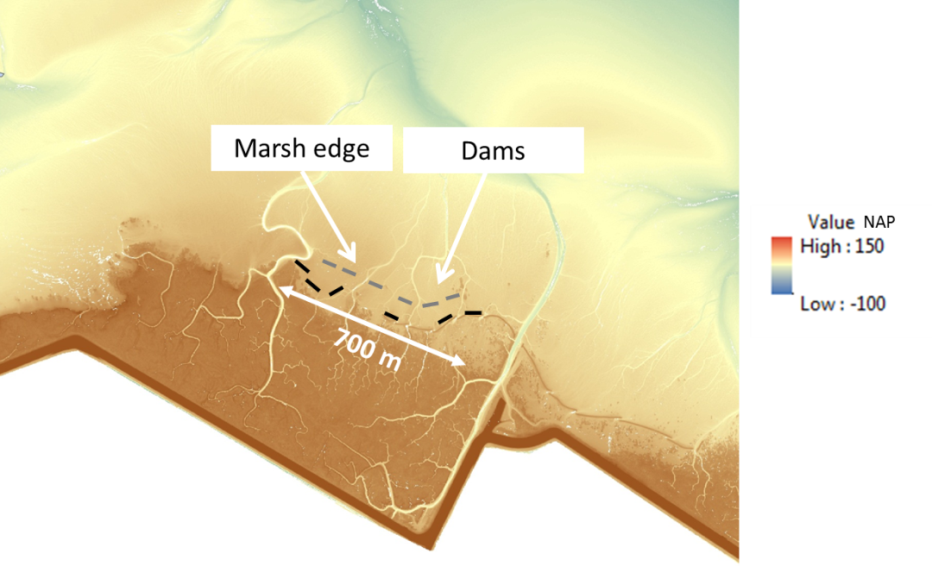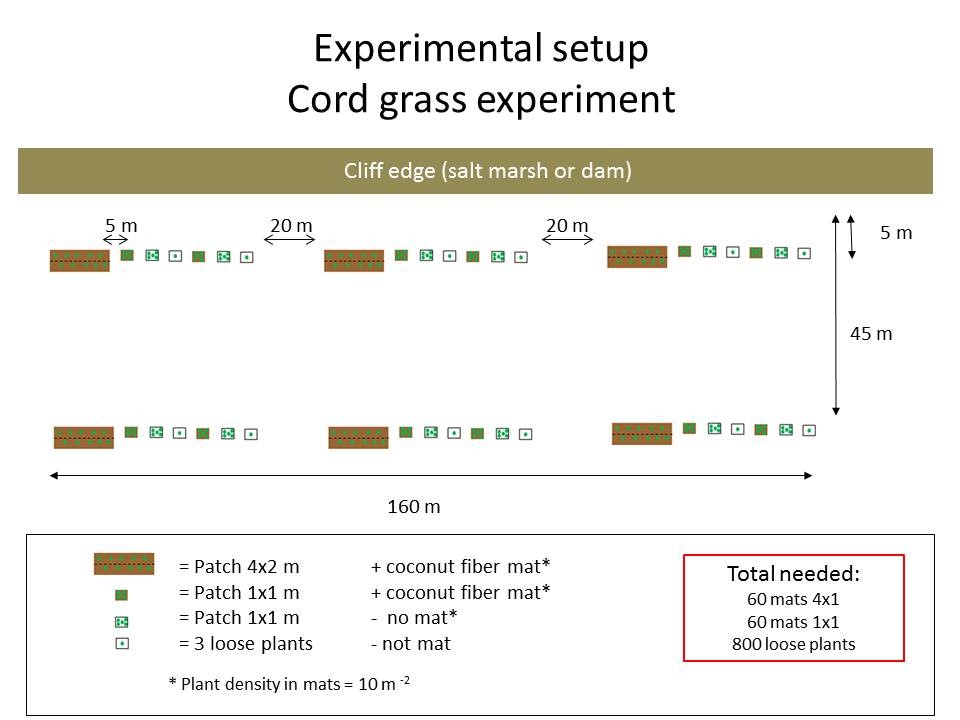Planning and design
In 2012 Building with Nature tested whether Spartina plants pre-grown in coconut fibre mats can be installed in front of existing salt marshes and/or artificial salt marsh defense structures. Before planning and design could lead to actual construction, the project had to be legally approved. Because the Dutch Eastern Scheldt is a national park under Natura 2000, local authorities had to verify whether the installation of the cord grass mats would not jeopardize the local conservation goals of the area.

To see whether the pre-grown cord grass mats had an advantage over individually planted Spartina plants, cord grass mats and loose plants were compared at various sites in the Eastern Scheldt. Three locations were chosen: Rattekaai, Sint Annaland and Dortsman (Figure 1). The locations differ in hydrodynamic stress (from sheltered to exposed).
At Rattekaai and Sint Annaland, the patches were installed directly in front of the salt marsh and in front of the dams designed to protect them. At Dortsman similar patches were installed, but only in front of the marsh edge as no dams are present there.
Additionally, patches were installed at two distances from the “cliff” edge (cliff edge distinguishes a man-made hard structure e.g. dam, while the marsh edge is the natural edge of the marsh), 5 and 40 m offshore, respectively (Figure 2 and 3). This was done because survival of cord grass close to a cliff (dam or marsh edge) may be difficult due to extra wave action induced by wave reflection from the cliff. The different distances from the cliff also represent the middle and high intertidal area, which enables comparing the combined effects of the cliff and the inundation time.


Three replicas were applied at each saltmarsh and at each distance from the edge. In total about 300 m2 of mats were installed, divided over the three locations: 120 m2 at Rattekaai and Sint Annaland each and 60 m2 at Dortsman. An individual mat of 5 by 1 m contained 10-14 plans per m2 on average. The mats were cut up in 4 by 1 m mats and 1 by 1 m mats. The experimental set-up (Figure 3) consisted of two 4 by 1 mats placed next to each other and several 1 by 1 m mats next to that.
Different configurations were tested. Similar numbers and densities of loose cord grass plants were installed at 10 m distance from the mats, in order to have no interference and yet as similar conditions as possible. After installation, the survival and growth of the Spartina plants, as well as their effect on the sedimentation/erosion of the tidal flat was monitored. As the experiments are on-going, only preliminary results can be discussed.
Legislation
There were two potential threats: the cord grass used in this experiment originated from the Swansea salt marsh in Wales and the mats were also pre-grown in Wales. The former might lead to a take-over of the existing Spartina population, the latter involved the possibility of hitch-hiking other organisms to invade the Eastern Scheldt.
Both threats were thought to be non-significant, because:
- All cord grass Spartina anglica in western Europe is genetically closely related to its source population in Poole Harbour;
- The mats were pre-grown in freshwater basins, so there was no chance for other organisms to survive the transfer to the salt water of the Eastern Scheldt. Experts were consulted and they supported the pilot experiment and did not foresee any impediment. For these reasons, local authorities granted legal permission for the experiment.
Project Solution
The concept of ecosystem engineering is adopted when investigating the potential use of cord grass (Spartina anglica) in the higher intertidal zone for consolidation and stabilization of tidal flats, and for the creation/restoration of pioneer salt marsh zones. One of the problems is that (re-)establishment of coastal vegetation on bare mudflats is often excluded by the harsh environmental conditions (i.e. wave- and current-induced hydrodynamic forces) which hamper settlement and survival. Therefore, the project aims at developing a suitable substrate in which Spartina plants can establish before being put in place, in order to make them less prone to wash-out by the hydrodynamic forces. Whether the Spartina plants can grow out into larger tussocks and subsequently into healthy meadows depends on additional factors such as sufficient sediment input.
The project fits within a larger concept of using a cascade of natural stabilizing measures from the low intertidal up to the dike. As such the project is an extension of the BwN oyster reefs projects in the lower intertidal zone.
